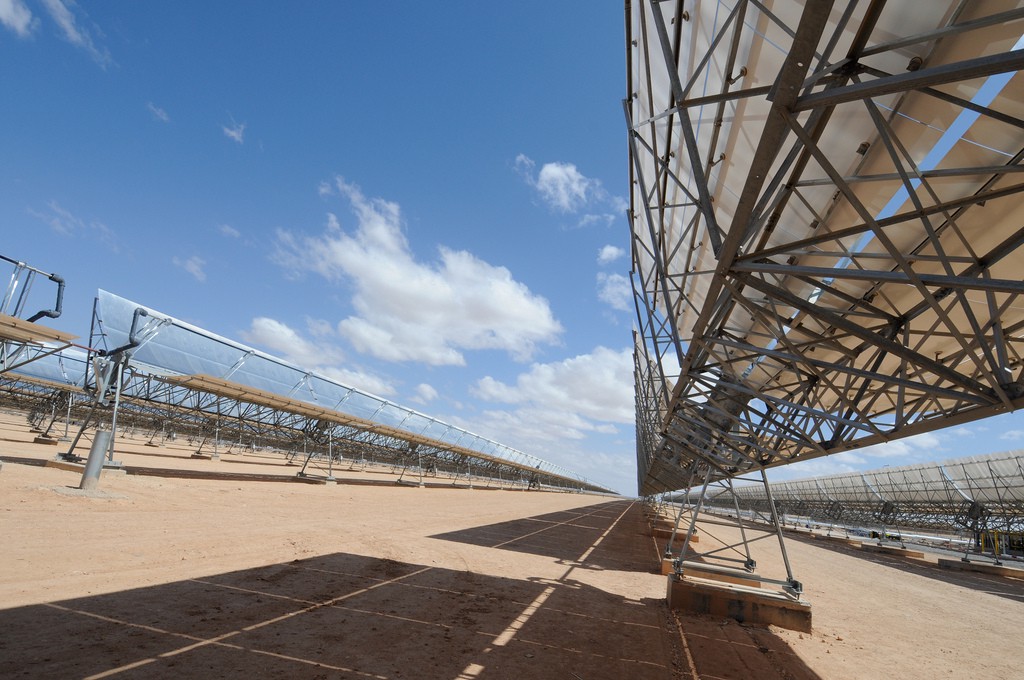Now that the 2030 Agenda for Sustainable Development has been adopted, governments are confronting the question of how to pay for the enormous investments — especially in infrastructure — required to meet the goals.
Clearly, governments don’t have the fiscal space to finance all the investments, or the skills to design and manage them. So the focus has been on how to “crowd in” private investment and management.
 Because not enough private investment is flowing today, donor governments are exploring how to “blend” international aid money with private finance to make resources go farther and attract more private investment.
Because not enough private investment is flowing today, donor governments are exploring how to “blend” international aid money with private finance to make resources go farther and attract more private investment.
However, as more public funds are applied to private sector projects, the term “blended finance” has come to mean different things to different people.
[blockquote author=”” pull=”pullleft”]Structuring to reduce risk strengthens the economic fundamentals and makes infrastructure more affordable.[/blockquote]
In general, blended finance means a combination of public and private finance — which may or may not involve any explicit subsidy. Too much of the discussion so far has been in the direction of introducing donor subsidies into project finance structures. This is often the wrong approach, especially if not managed with sufficient discipline. It is also not a scalable approach, and hence won’t take us very far towards the trillions of dollars of investment needed. There aren’t enough bankers, lawyers, and donor officials in the world to run every investment through a complex blended finance structure.
Here are five things promoters of blended-finance solutions need to keep in mind:
1. Economic fundamentals trump financial structuring.
All the blending in the world won’t make a financially unsustainable activity sustainable, or unaffordable infrastructure affordable. All it will do is make subsidies opaque and quite likely sub-optimal. As Michael Klein has noted in a paper published by the World Bank, on average, power tariffs in emerging markets cover 80 percent of the cost, while water tariffs cover 20 percent. Private investment is not going to flow into power and water assets on this basis — it is simply not a viable investment.
Governments can address this viability gap either by closing it — by raising prices or cutting costs, or both — or by filling it with a subsidy. Either way is transparent and provides a basis for attracting private investment, so long as the solution is sustainable.
Blended finance can sometimes be helpful to tip the balance in marginally profitable, risky projects towards attracting commercial investment, but it can’t alter the fundamental economics of the project.
2. Fixing the investment climate and regulatory/tariff framework is more important than project structuring.
Fixing things at the project level is always second-best to fixing them at the sector or macro level. To scale up finance, we can’t apply Band-Aids to every wonky project structure — we need to build an investment climate and regulatory framework that generate robust project structures on a replicable basis.
This is public policy work that needs public financing of advisory services to make progress. Financing this work can have a broader impact than financing individual investments. Blended finance can help key investments to proceed, but should be seen as a stepping stone to more comprehensive reforms.
3. Risk transference is not the same as risk mitigation.
It is tempting to use public money for guarantees and other structures that buy down part of the project risk. This doesn’t make a project less risky; it just transfers exposure to that risk to the public sector. Better to pursue risk-allocation structures that align risk exposure to the ability to manage that risk — thus providing incentives to actually reduce the risk.
Private investors don’t mind taking risk so long as they can diversify and hedge their risks. But they will want to be compensated for the risks they are taking — resulting in more costly, less affordable infrastructure. In contrast, structuring to reduce risk strengthens the economic fundamentals and makes infrastructure more affordable.
4. Risk exposure matters more than cash flow.
Donors often guarantee private bank lending. Some people may think that they have thereby crowded in private investment. They haven’t — they have just used a private bank to provide liquidity for a public sector investment. What matters in an investment is who bears the commercial risk, not who disburses the cash. To crowd in private capital, guarantees need to be structured to take only part of the risk.
5. Deal flow is not the central problem.
There is much talk about lack of deal flow. Most of this stems from points one and two above. Nevertheless, even where the fundamentals are right, there needs to be an agent to structure and package the financing of infrastructure.
With greater clarity on these points, donors and development-finance institutions can conduct more constructive discussions about how to blend public and private finance and achieve scale in financing development priorities.
They will find that there is plenty of opportunity for public and private finance to complement each other in raising the flows of investment to emerging markets, especially for infrastructure — but perhaps not in the ways that they first thought of.
[seperator style=”style1″]Disclosure[/seperator]
This post originally appeared on Medium and was reposted with the author’s permission.
Photo: © Dana Smillie / World Bank
This blog is the first in a three-part series on blended finance. The next part will suggest some useful approaches to blending public and private finance. Part 3 will draw lessons from IFC’s blended finance program, which has developed over the past 10 years to achieve development impact with a disciplined, time-bound use of subsidy.











